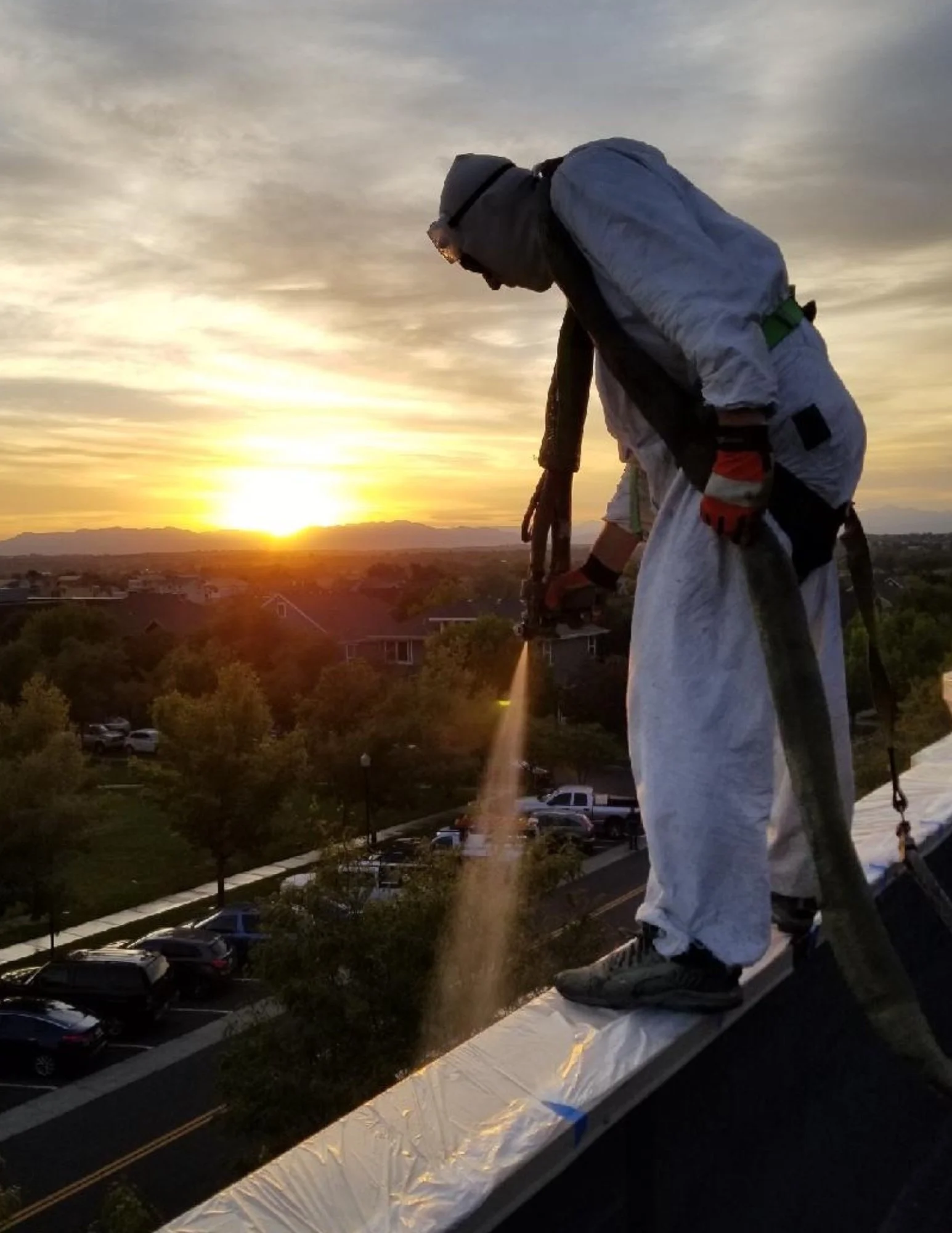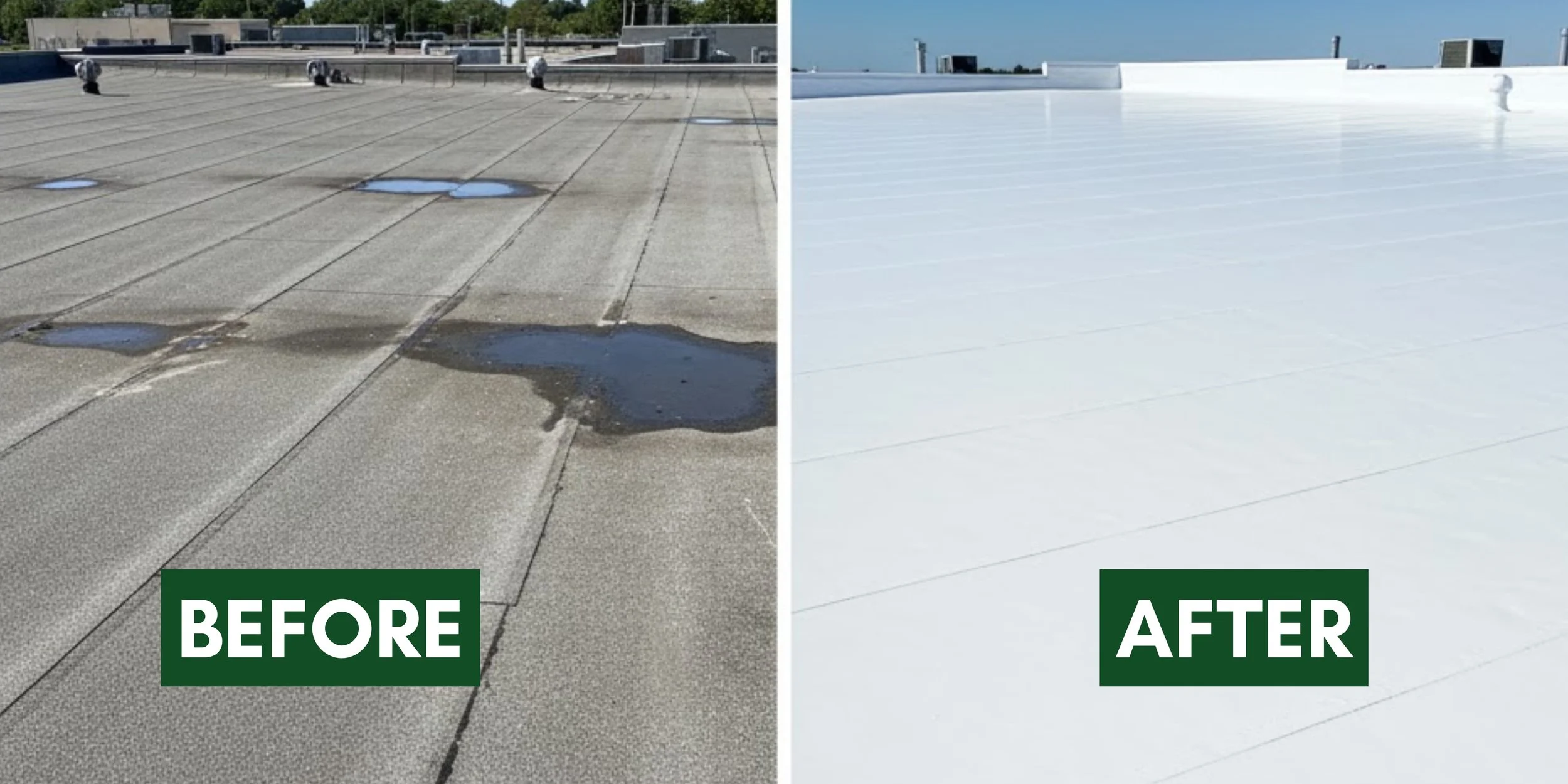The ROI of Liquid-Applied Roofing Systems: Cost vs Long-Term Benefits
Investing in a commercial roof is more than just a line item on a budget it’s a strategic decision that affects a building’s lifespan, operational costs, and overall value. For commercial property owners and facility managers in Colorado, harsh weather conditions, from intense sun and hail to heavy snow, make the choice of roofing system even more critical. Traditional roofing materials often face challenges in cost, durability, and maintenance, but modern solutions like liquid-applied roofing systems are proving to be a game-changer.
By providing a seamless, waterproof barrier that adapts to complex surfaces, liquid-applied roofing systems not only protect your property but also improve long-term cost efficiency. Understanding the return on investment (ROI) of these systems can help business decision-makers choose the best path for their commercial properties. For more in-depth insights and guidance, check out our article about commercial roofing in Colorado.
What Is a Liquid-Applied Roofing System?
Liquid-applied roofing, sometimes called liquid-applied waterproofing, is a versatile solution that creates a continuous, seamless layer across the roof surface. Unlike traditional sheet membranes that require seams and joints, liquid coatings flow into cracks, edges, and complex areas, forming a durable waterproof barrier.
Types of Liquid Coatings
Polyurethane: Highly flexible, excellent for movement and thermal expansion.
Acrylic: UV-resistant, ideal for reflective and energy-efficient roofs.
Silicone: Extremely resistant to ponding water, making it perfect for flat roof waterproofing.
Application Methods and Benefits
Liquid-applied coatings are generally cold-applied, eliminating the need for heat or open flames. They can be sprayed, rolled, or brushed, making them adaptable to both simple and complex commercial roof shapes. This flexibility reduces installation risks and ensures long-term performance, particularly for flat or multi-level roofs.
For Colorado commercial properties, where weather extremes can cause traditional roofing systems to crack or leak, the seamless protection of a liquid-applied waterproofing membrane offers peace of mind and tangible cost savings over time.
Comparing Liquid-Applied vs. Traditional Roofing
| Feature | Traditional Membrane | Liquid-Applied Roofing |
|---|---|---|
| Seams | Multiple seams prone to leaks | Seamless, continuous coating |
| Installation | Heat-welded or glued sheets | Cold-applied spray, roll, or brush |
| Surface Adaptability | Limited for complex roofs | Conforms to irregular surfaces |
| Maintenance | Higher, seam inspections required | Lower, easy recoating |
| Lifespan | 15–20 years average | 20+ years with proper maintenance |
When evaluating roofing options, it’s important to consider differences in installation, performance, and maintenance.
The seamless nature of liquid-applied coatings minimizes weak points, while the flexibility to expand and contract with the roof reduces the risk of damage. Maintenance and repairs are simpler and often less expensive, which contributes directly to improved ROI.
The ROI of Liquid-Applied Roofing
One of the biggest questions commercial property owners ask is: does a liquid-applied roof provide a good return on investment?
Upfront Costs vs Long-Term Savings
While liquid-applied systems may have higher initial material costs than some traditional membranes, the long-term benefits often outweigh the upfront expenditure. Key savings come from:
Extended lifespan: Properly installed coatings can last 20+ years, reducing the frequency of full roof replacements.
Lower maintenance: Seamless protection limits leaks and costly patch repairs.
Energy efficiency: Reflective coatings can reduce heating and cooling costs a significant advantage in Colorado’s variable climate.
Insurance advantages: Reduced risk of leaks or water damage may lower premiums.
Roof Restoration vs Replacement
Liquid-applied roofing can often be applied over existing membranes, turning a potential replacement into a cost-effective restoration. This approach, sometimes called roof restoration vs replacement, allows building owners to defer major capital expenses while improving the roof’s performance.
By considering these factors, property managers can calculate a new roof ROI that often surpasses traditional alternatives. These strategies align with broader approaches to future-proofing commercial roofs as part of a comprehensive commercial roof protection strategy.
Sustainability Advantages
Sustainability is no longer optional for many commercial property owners it’s a priority. Liquid-applied roofing systems support sustainable commercial roofing initiatives by:
Reducing waste: Many coatings can be applied over existing roofs, limiting landfill disposal.
Improving energy efficiency: Reflective coatings lower energy consumption, contributing to environmental goals.
Corporate responsibility: Choosing green roofing options can align with broader ESG (environmental, social, governance) standards.
These benefits make liquid-applied roofing an attractive choice for businesses seeking both financial and environmental ROI.
Installation and Maintenance Tips
Achieving the best ROI depends on proper installation and ongoing maintenance. Key steps include:
Surface preparation: Clean and repair the existing roof before application.
Coating application: Apply multiple layers as recommended by the manufacturer.
Curing and reinforcement: Ensure proper curing time and reinforce high-traffic areas.Regular inspections: Annual or biannual checks help identify small issues before they escalate.
Hiring a skilled installer is critical. Working with an expert commercial roofer ensures coatings are applied correctly, maximizing lifespan and long-term savings.
Real-World Examples / Case Studies
Consider a mid-size commercial office in Denver with a 20-year-old flat roof. Applying a liquid-applied membrane instead of a full replacement:
Upfront cost: $120,000 vs $180,000 for new membrane
Estimated maintenance over 10 years: $15,000 vs $50,000
Energy savings from reflective coating: $8,000 annually
Resulting ROI: Significant cost deferral and energy savings, extending the roof’s life by 15+ years
These examples highlight measurable benefits and demonstrate how liquid-applied systems integrate with other commercial roofing systems for optimal performance.
Making the Right Choice for Your Roof
When evaluating roofing options, consider:
Building type and complexity
Local climate conditions
Maintenance goals and budget
Sustainability initiatives
Consulting an expert commercial roofer ensures that you select the right system for your property. Options like spray polyurethane foam roofing or liquid coatings may offer complementary solutions.
Conclusion
Liquid-applied roofing systems offer more than just protection they provide a strategic advantage for commercial properties in Colorado. With unmatched durability, seamless flexibility, and sustainable benefits, these systems can significantly extend your roof’s lifespan, reduce costly maintenance, and even improve energy efficiency.
For building owners and facility managers looking to make smart, long-term investments, liquid-applied roofing isn’t just a choice, it’s a future-proof solution that pays dividends year after year.







